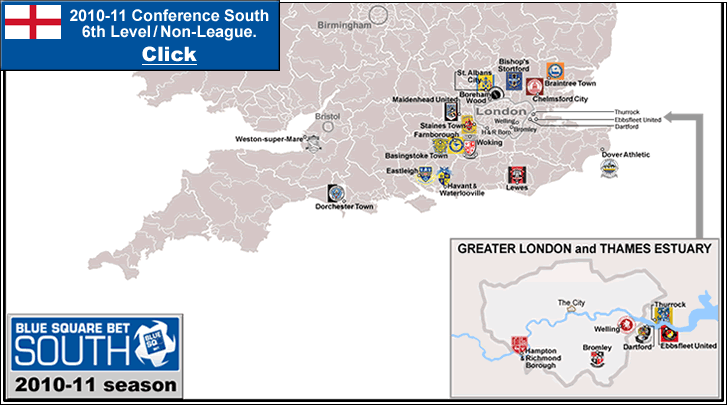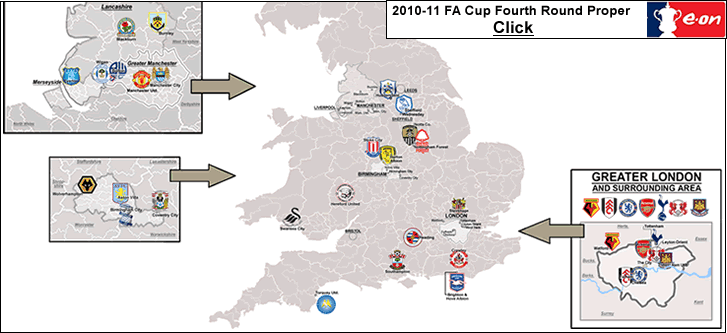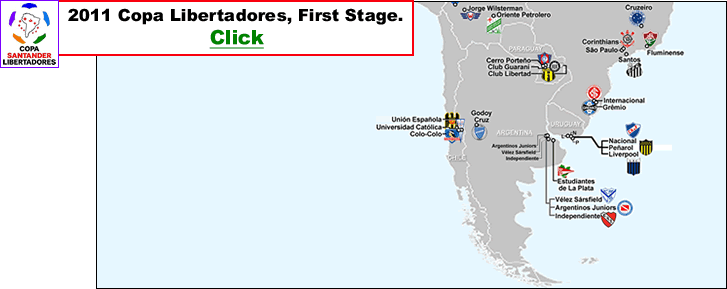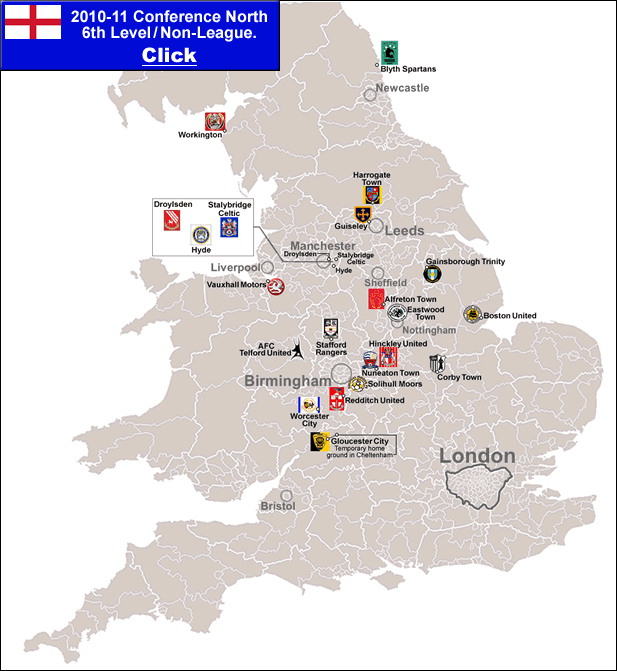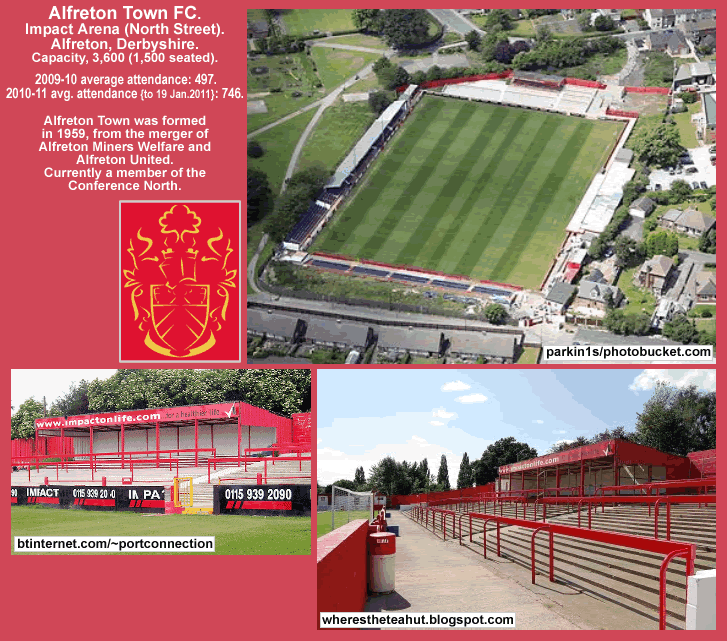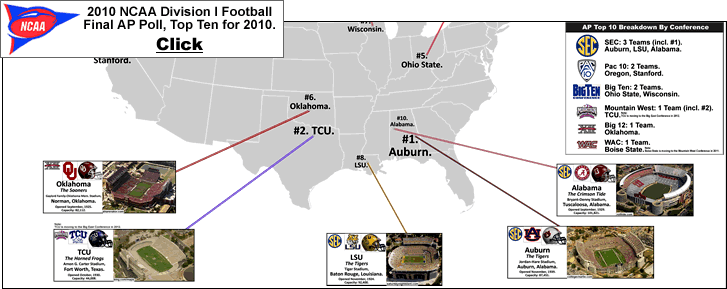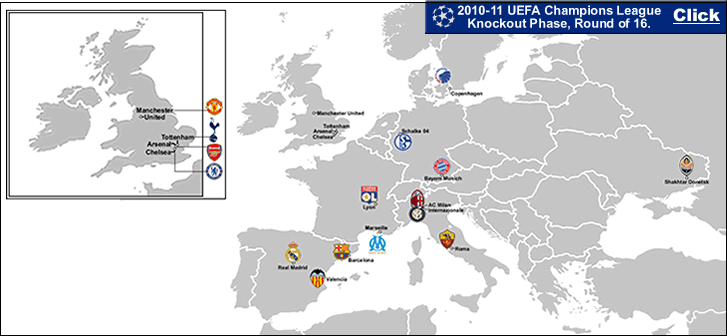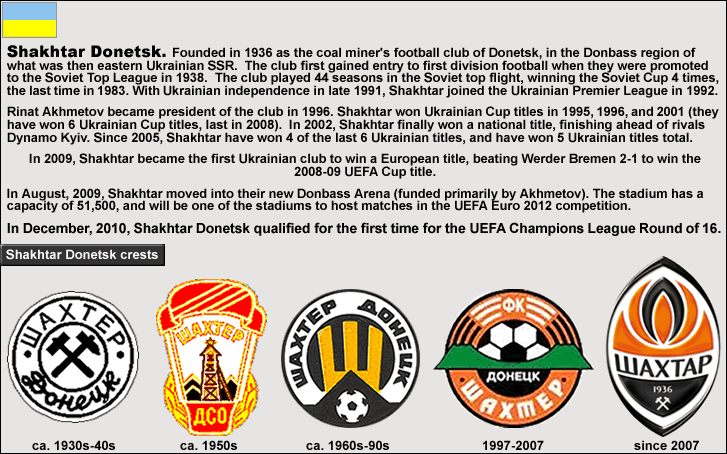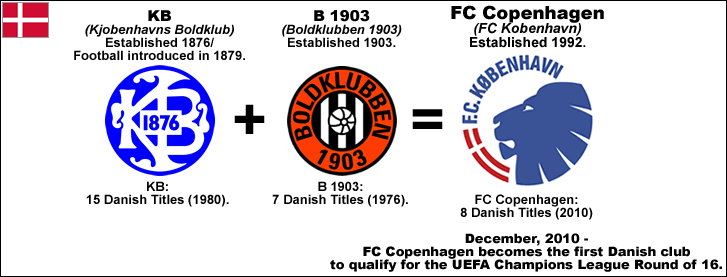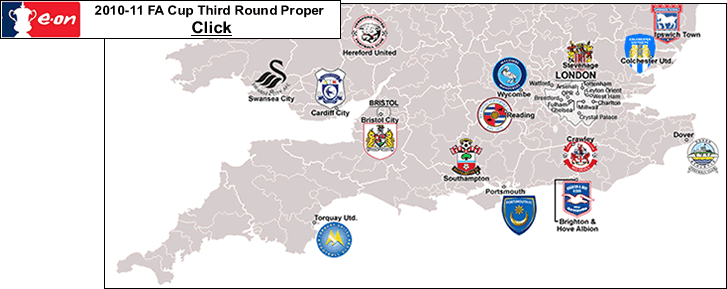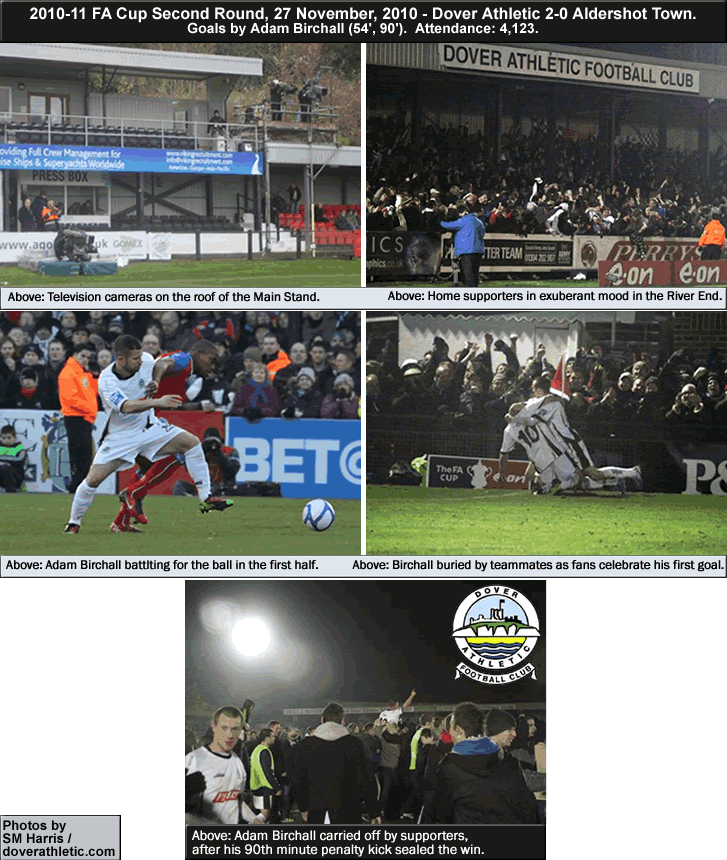…
…
Conference South table, fixtures, results (Soccerway.com).
The Conference South is one of two leagues that comprise the 6th Level of the English Football Pyramid. The Conference South’s sister league is the Conference North {to see my recent map of and post on the 2010-11 Conference North, click here}. These two leagues were instituted in 2004-05. Clubs were drawn from the Northern Premier League, the Southern League, and the Isthmian League [those three leagues now make up the 7th Level]. After each season, two promoted clubs go up to the Conference National (5th Level) – the league winner and the winner of the 4-team playoff. Three relegated clubs go down to the 7th Level, to the Southern Football League Premier Division, which is composed of clubs from the South West, the South Central, and the Midlands; or the Isthmian Football League Premier Division, which is composed of clubs from the East of England (particularly Hertfordshire and Essex), Greater London, and the South East. [Theoretically, a club relegated from the Conference South could go to the Northern Premier League Premier Division (which is composed of clubs from the North East and the North West), but there would have be real unusual circumstances for that to happen].
There are 22 clubs in the Conference South.
…
The map page shows the clubs’ profile boxes placed from top to bottom in the order of the current Conference South table (as of Sunday, 30 January, 2011). The profile boxes include the club’s home kit badge, nickname, year of formation, stadium and capacity, location, 2009-10 final placement, and all-time highest league placement. Current average attendances (from home league matches) and 2009-10 average attendances are shown at the right of the map.
…
Current leaders are the north Essex club Braintree Town FC (est. 1898), who hail from Braintree, which is 63 km. (39 mi.) north-east of London, and has a population of around 42,000 {2001 census figure}. Braintree Town have now won 6 straight matches, and are 6 points ahead of 2nd-place Bromley, with 4 games in hand. Braintree Town are known as the Iron, and the club’s origins are as Manor Works, the works team of the Crittall Window Company, who were once the leading window makers in the country (the Iron name refers to the company’s iron window frames). The factory overlooked the Cressing Road ground that Braintree Town play at, and though it was demolished in 2005, its image is still part of the club’s crest. Braintree Town were promoted to Conference South as champions of the Isthmian League Premier Division in 2005-06. The Iron play these days in orange jerseys (previously yellow) and blue pants. Their manager is Rod Stringer, who came over from the south Essex/Thames Estuary 7th Level club Aveley FC in May, 2010, after revitalizing that club and leading them to promotion from the 8th Level to the Isthmian League Premier Division in 2008-09. Here is an article from This Is Essex.co.uk, from 20 January, by David Ward, ‘BRAINTREE TOWN: Iron progress a surprise for boss‘. Here is the official Braintree Town site, www.braintreetownfc.org.uk/. The site features highlights from their previous match. Also, at the Braintree Town site you can see the ambition the club have, with an architect’s rendering of the club’s proposed new stadium.
Pyramid Passion.co.uk’s page on Braintree Town, here.
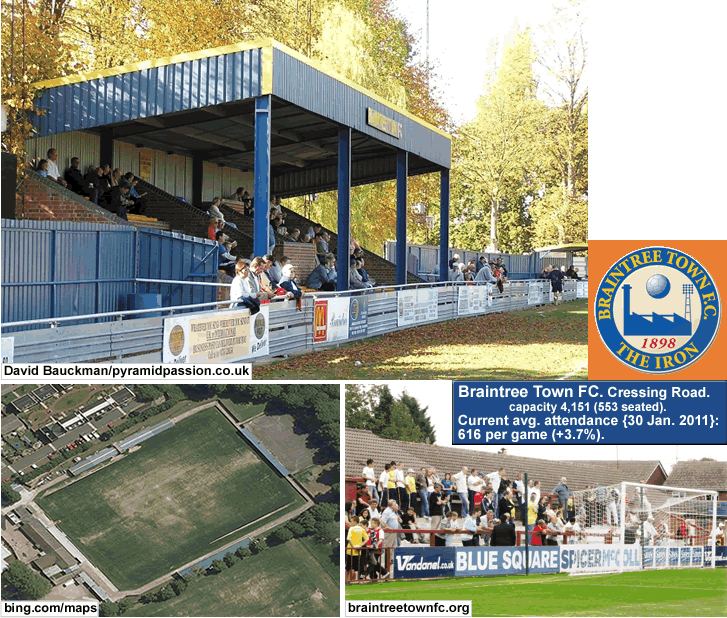
Photo credits – David Bauckman at Pyramid Passion.co.uk, here. Bing.com/maps/Bird’s Eye satellite view, here. BraintreeTownFC.com, here.
…
Median average attendance this season in Conference South is currently (30 Jan.) 616 per game. This puts Conference South as a higher draw than Conference North, whose current median avg. attendance is 443 per game. There are currently 3 clubs drawing over 1,000 per game and 13 clubs drawing over 500 per game in Conference South. In Conference North, there are currently 2 clubs drawing over 1,000 per game and 7 clubs drawing over 500 per game.
The best-drawing club in Conference South this season is Dartford FC, who won promotion, as champions, from the Isthmian League Premier Division in 2009-10. Dartford is on the edge of Greater London, in Kent, on the Thames Estuary, and is 24 km. (15 mi.) south-east of London city center. Dartford has a population of around 89,000, and is perhaps best known as the location of the main thoroughfares which connect South East England to East London and Essex, via the Dartford Crossing and the Dartford Tunnel.
The Darts are currently in a relegation battle, in 17th place, but they have won 2 straight. Dartford FC are averaging 1,320 per game this season, which is a pretty impressive figure for a club that had never been in the 6th Level before this season. The primary reason for their good turnstile count is that the Darts play at Princes Park, a ground that is pretty unique, to say the least. It has been described as the most ecologically sound football ground ever built. Princes Park, which is constructed primarily of wood, maintains an open-air feeling underscored by the large glass windows of the club house behind parts of the main stand, and features a living roof (with sedum growing on it – sedum is a plant commonly used in green roofs, with water-retention characteristics that make it preferable to grass). The ‘green roof’ allows rainwater to be collected (and stored in two ponds on the site) and re-used for watering the pitch. Solar panels are employed for energy saving. Designed by Alexander Sedgley Architects, Princes Park opened in 2006. It has a capacity of 4,100 (642 seated) and is located close to the Dartford town center.
‘A Park Fit For A Prince‘, from SPAOTP.com.
Tims92.co.uk’s page on Dartford’s Princes Park, here.

Photo credits-Groundtastic.co.uk. Tims 92.co.uk. SomePeopleAreOnThePirch. Bluesqsouth.com.
___
Thanks to Soccerway.com, for attendance figures.
Thanks to the contributors to the pages at en.wikipedia.org, ‘Conference South‘.
